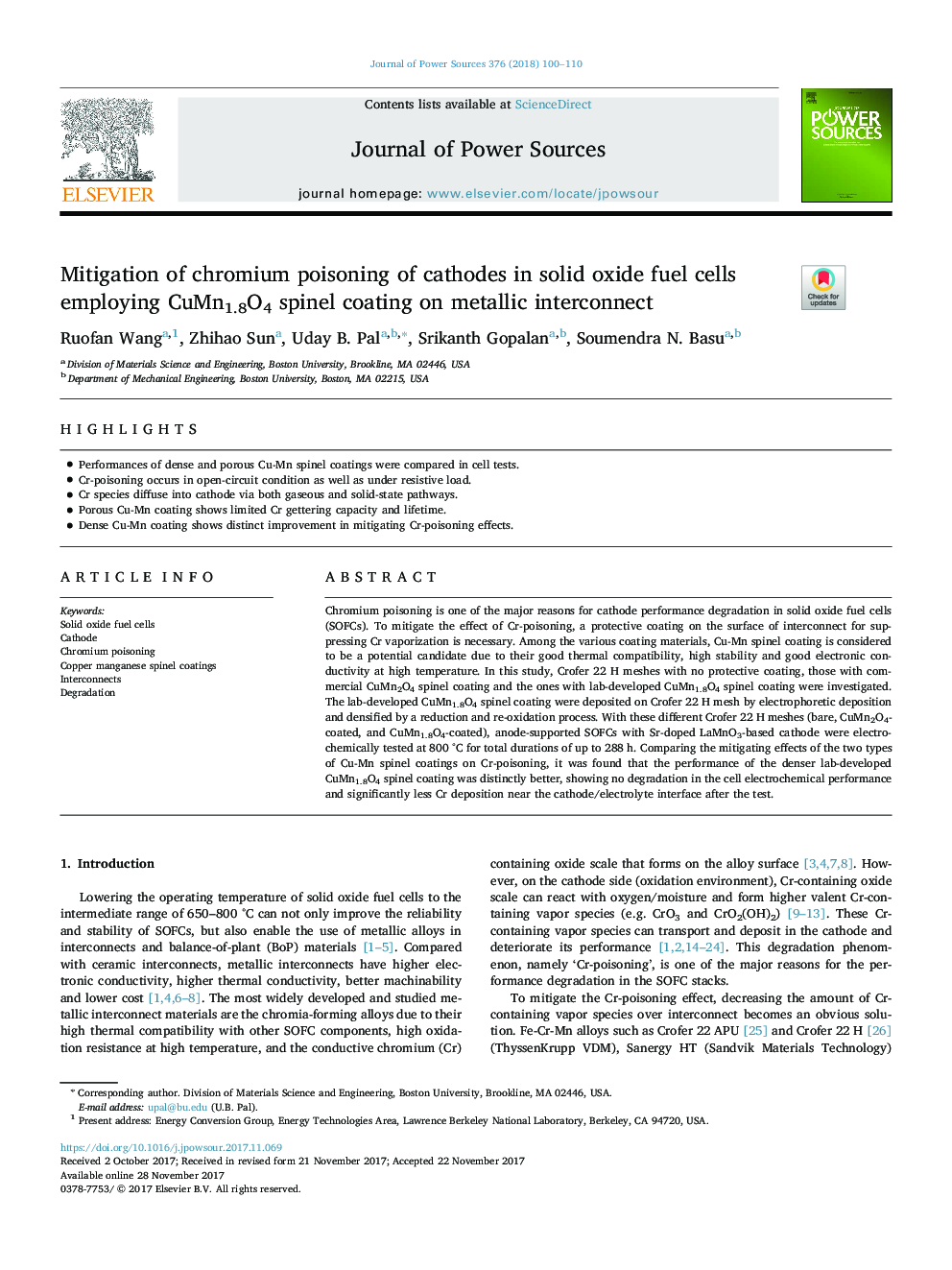| Article ID | Journal | Published Year | Pages | File Type |
|---|---|---|---|---|
| 7725972 | Journal of Power Sources | 2018 | 11 Pages |
Abstract
Chromium poisoning is one of the major reasons for cathode performance degradation in solid oxide fuel cells (SOFCs). To mitigate the effect of Cr-poisoning, a protective coating on the surface of interconnect for suppressing Cr vaporization is necessary. Among the various coating materials, Cu-Mn spinel coating is considered to be a potential candidate due to their good thermal compatibility, high stability and good electronic conductivity at high temperature. In this study, Crofer 22 H meshes with no protective coating, those with commercial CuMn2O4 spinel coating and the ones with lab-developed CuMn1.8O4 spinel coating were investigated. The lab-developed CuMn1.8O4 spinel coating were deposited on Crofer 22 H mesh by electrophoretic deposition and densified by a reduction and re-oxidation process. With these different Crofer 22 H meshes (bare, CuMn2O4-coated, and CuMn1.8O4-coated), anode-supported SOFCs with Sr-doped LaMnO3-based cathode were electrochemically tested at 800 °C for total durations of up to 288 h. Comparing the mitigating effects of the two types of Cu-Mn spinel coatings on Cr-poisoning, it was found that the performance of the denser lab-developed CuMn1.8O4 spinel coating was distinctly better, showing no degradation in the cell electrochemical performance and significantly less Cr deposition near the cathode/electrolyte interface after the test.
Related Topics
Physical Sciences and Engineering
Chemistry
Electrochemistry
Authors
Ruofan Wang, Zhihao Sun, Uday B. Pal, Srikanth Gopalan, Soumendra N. Basu,
